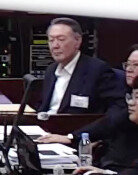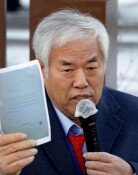Global skyscrapers stand empty: a financial crisis looms
Global skyscrapers stand empty: a financial crisis looms
Posted June. 24, 2023 07:51,
Updated June. 24, 2023 07:51
Just as the echoes of the global banking crisis - sparked by Silicon Valley Bank's (SVB) bankruptcy in March - seem to fade, a new specter of financial instability arises. The symbols of economic power, the office skyscrapers in major cities worldwide, are at the heart of this impending crisis. Three years of widespread remote work amid the pandemic, combined with corporate restructuring, have left commercial buildings empty. This rise in vacancy rates is accompanied by a plummet in asset values, raising serious concerns. The collapse of financial firms that have heavily invested in these properties or provided significant loans is a ticking time bomb, threatening to send shockwaves through the global financial system.
By the end of March this year, the average vacancy rates in 10 out of 17 major global cities, including New York, Hong Kong, Shanghai, and London, exceeded the levels seen in the aftermath of the 2008 financial crisis. In New York, office spaces equivalent to 26 Empire State Buildings lie dormant. Meanwhile, a quarter of Hong Kong's iconic Cheung Kong Centre gathers dust. Mid-sized local banks, including the now-bankrupt SVB and Signature Bank, were responsible for 80% of these commercial real estate loans in the U.S. It's no wonder that the “Emperor of the Wall Street,” JP Morgan CEO Jamie Dimon, is among those sounding the alarm about a potential financial crisis emanating from commercial real estate.
This crisis cannot be chalked up as a distant problem. Korean financial institutions have a significant stake in foreign real estate, with investments totaling 74 trillion won. More than 70% of this, or over 50 trillion won, is tied up in commercial properties. The National Pension Service has about 40 trillion won invested in foreign real estate. As these properties' value drops precipitously, Korean financial institutions face significant hurdles in fund recovery, with the potential for substantial losses looming.
Further complicating matters, the Korean financial sector faces a domestic threat in the form of non-performing project financing (PF) loans, predominantly linked to apartment construction. As of last September, PF loans amounted to a staggering 163 trillion won. Soaring interest rates, construction costs, and a sluggish real estate market have led to halted development projects and a sharp rise in delinquency rates among lenders, including savings banks and securities companies.
Global commercial real estate vacancies, born from societal structural shifts due to the pandemic, present a stubborn problem. Even with an end to austerity measures and a revitalized economy, a swift resolution seems unlikely in the near term. Korea’s financial authorities need to fully comprehend the reality of foreign investments, promote early recovery strategies for financial institutions, and safeguard domestic investors from further damage. It's crucial to prevent a potential commercial real estate shock overseas from triggering a domino effect, leading to a PF loan crisis in the domestic financial market.



![[속보]국힘 윤리위, 한동훈 제명 결정…장동혁호 ‘뺄셈 정치’ 가나](https://dimg.donga.com/c/138/175/90/1/wps/NEWS/IMAGE/2026/01/14/133151701.1.jpg)



